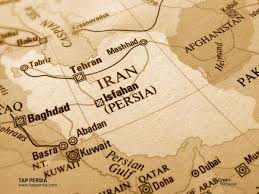
Persia, known today as Iran, is one of the world’s oldest and most where is persia now? significant regions. Once the heart of a vast empire that shaped art, science, philosophy, and politics, Persia’s legacy continues to influence global culture and heritage. But where exactly is Persia, and what makes it so important in world history?
Geographical Location of Persia
Historically, Persia refers to the region that now forms modern-day Iran, located in Western Asia. It lies between the Persian Gulf and the Caspian Sea, bordered by countries such as Iraq, Turkey, Afghanistan, Pakistan, Armenia, and Azerbaijan.
Iran’s diverse landscape includes mountain ranges like the Zagros and Alborz, vast deserts such as the Dasht-e Kavir, and fertile plains that have supported civilizations for thousands of years. Its strategic location has always made it a crossroads between the East and the West, connecting ancient trade routes — including the legendary Silk Road.
The Origin of the Name “Persia”
The name Persia comes from “Parsa” or “Pars,” the region where the Persian people originated. This area corresponds to Fars Province in southern Iran. The ancient Greek name Persis referred to this land, and Western countries adopted “Persia” to describe the entire empire.
However, in 1935, Reza Shah Pahlavi, the ruler of Iran, officially requested that the international community refer to the country as Iran, which means “Land of the Aryans.” Both terms — Persia and Iran — refer to the same country, though “Persia” is often used when discussing the nation’s historical or cultural heritage.
A Glimpse into Persian History
The Persian Empire is one of the oldest and most influential civilizations in human history. It was founded by Cyrus the Great in the 6th century BCE, marking the beginning of the Achaemenid Empire — the first Persian Empire. At its height, it stretched from the Indus Valley in the east to Greece and Egypt in the west, making it one of the largest empires ever known.
Persia was known for its remarkable governance, advanced architecture, and respect for different cultures and religions. The Royal Road, Persepolis, and Cyrus’s Cylinder — often considered the first declaration of human rights — all symbolize Persia’s lasting influence.
Persia’s Cultural Influence
Persian culture has left an indelible mark on art, literature, philosophy, and architecture. Great poets like Rumi, Hafez, and Omar Khayyam shaped world literature. Persian art and carpets remain globally admired for their intricate craftsmanship.
Persian cuisine, music, and traditions also continue to thrive, blending ancient customs with modern influences. Festivals like Nowruz, the Persian New Year, are celebrated not only in Iran but also across Central and South Asia.
Modern-Day Persia: The Nation of Iran
Today, the modern nation of Iran stands as the successor of ancient Persia. It maintains its rich cultural identity while playing a key role in regional and global affairs. Although much has changed over millennia, Iran remains a proud heir to one of the world’s most enduring civilizations.
Conclusion
Persia, the land of poets, kings, and timeless beauty, is now known as Iran, located in the heart of the Middle East. Its influence on world history, art, and culture is unmatched, reflecting a civilization that has thrived for over 2,500 years. To understand Persia is to explore the roots of human progress, creativity, and wisdom — a legacy that continues to inspire the world today.
